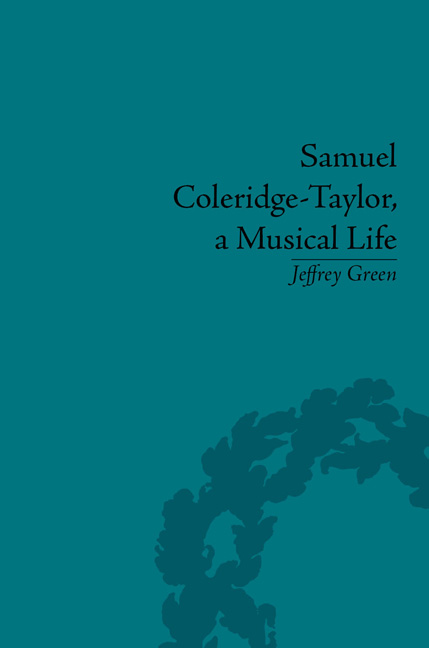Book contents
- Frontmatter
- CONTENTS
- Dedication
- Acknowledgements
- List of Figures
- Introduction
- 1 The Early Years
- 2 The Royal College of Music
- 3 The Promising Young Composer
- 4 The Wedding Feast
- 5 ‘A Sentiment Prevalent Here’
- 6 Intensifying the Effect
- 7 The International Star
- 8 A Stalwart Member of the Profession
- 9 A ‘Definite Place for the Negro in the World's History’
- 10 A Tale of Old Japan
- 11 Requiem
- 12 The Legacy
- Postscript
- Appendix 1 The Song of Hiawatha
- Appendix 2 Further Reading
- Notes
- Works Cited
- Index
2 - The Royal College of Music
- Frontmatter
- CONTENTS
- Dedication
- Acknowledgements
- List of Figures
- Introduction
- 1 The Early Years
- 2 The Royal College of Music
- 3 The Promising Young Composer
- 4 The Wedding Feast
- 5 ‘A Sentiment Prevalent Here’
- 6 Intensifying the Effect
- 7 The International Star
- 8 A Stalwart Member of the Profession
- 9 A ‘Definite Place for the Negro in the World's History’
- 10 A Tale of Old Japan
- 11 Requiem
- 12 The Legacy
- Postscript
- Appendix 1 The Song of Hiawatha
- Appendix 2 Further Reading
- Notes
- Works Cited
- Index
Summary
Herbert Walters guaranteed Coleridge-Taylor's fees at the Royal College of Music. Victorian Britain saw many acts of patronage with rich individuals including Tate and Carnegie paying for libraries; George Peabody funding low-rental homes; and Boot in Nottingham and Wills in Bristol financing university buildings. Walters, a businessman and a colonel in the volunteers was an undemonstrative patron. A generation later such men became stalwarts in the Scout movement.
The Royal College of Music was built with money largely donated by Leeds industrialist Samson Fox. The college casts its shadow over Prince Consort Road in London's residential district of Kensington. Coleridge-Taylor started in a nearby building, once the National Training School of Music. It still stands, and still stands condemned by the college's Hubert Parry who remarked that it was ‘about the worst building ever constructed for any purpose’. The district developed following the Great Exhibition of 1851. Its glass exhibition centre, a technological triumph, had been rebuilt on Sydenham Hill where, dubbed the Crystal Palace, it dominated the northern skyline of Croydon. The exhibition had attracted six million visitors (‘the greatest mass movement of people in Britain's history’) and buildings rose in Kensington on land purchased with the exhibition's profits and government grants, including three museums, the School of Mines and the Royal College of Music.
- Type
- Chapter
- Information
- Samuel Coleridge-TaylorA Musical Life, pp. 23 - 44Publisher: Pickering & ChattoFirst published in: 2014



